“According to the survey, nearly 82% of Americans plan to travel this summer, which could be more than 212 million adults throughout the season. This number is down from summer 2023, with 3% fewer people intending to travel at least once this summer.”
– The Vacationer
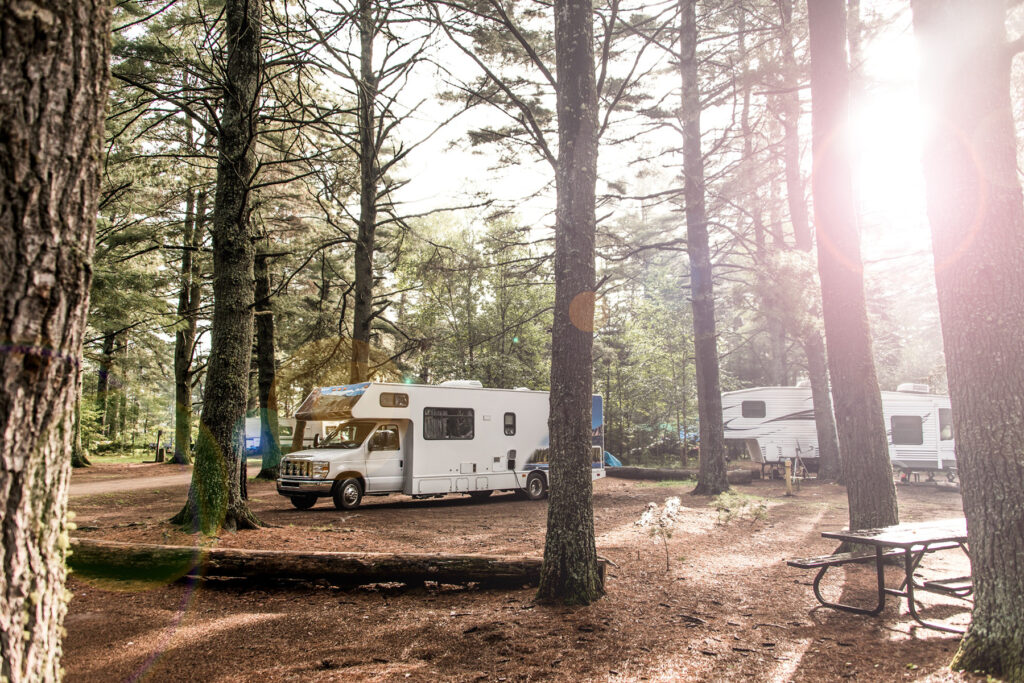
This is the time of year for family vacations, summer camping trips, beach bumming, hiking and exploring, visiting amusement parks, exploring national parks and landmarks and unwinding at vacation hotspots. Whether traveling by car, boat, RV or plane, whether traveling few hundred miles or a few thousand miles from home, staying for a week or month … getting a good night’s sleep is a huge consideration for many, for yourself and the whole family.
Getting a good night’s sleep is important not just for the sake of your vacation, but your overall health and safety. Even a short-term lack of sleep can harm your physical, mental and emotional health. Lack of quality sleep even for a few nights can slow your thinking, increase daytime drowsiness, decrease your energy level and even increase your risk of accidents – that is especially worrisome if you are taking a road trip.
Why do we struggle to sleep in unfamiliar environments, even if they are comfortable, clean, warm and inviting? How can we improve our sleep quality while traveling? And what can you and your family do before, during and after a trip to improve your sleep? And if you are a CPAP user, what steps can you take to make your trip easier?
The “First-Night Effect” – Impaired Sleep when Not at Home
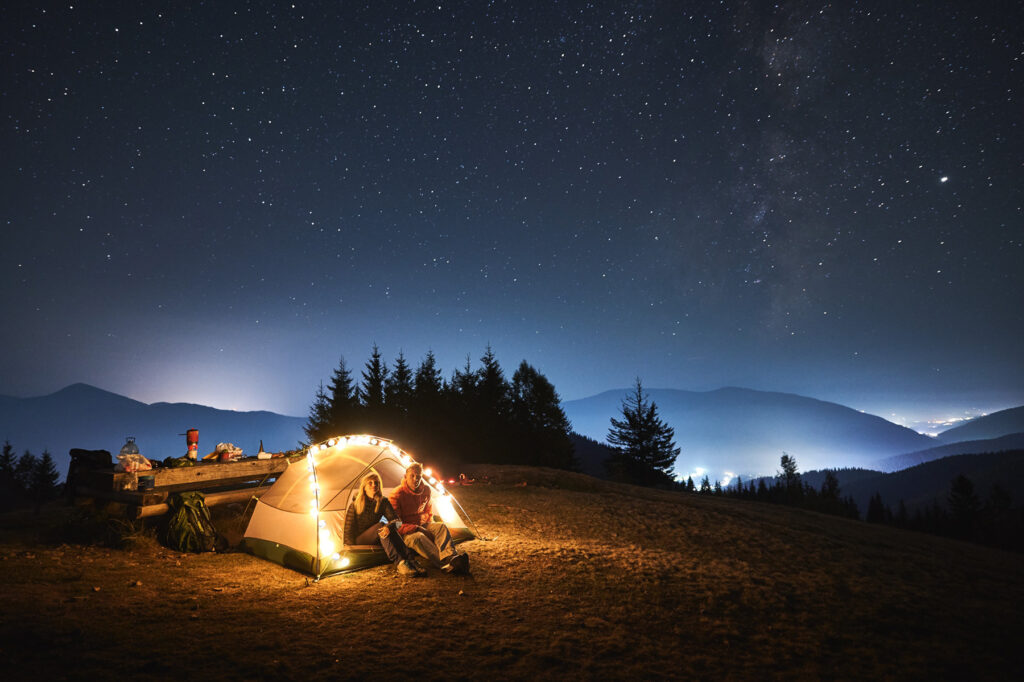
Many travelers experience what sleep experts call the “first-night effect” which means that people tend to have impaired or worse sleep the first night they spend in an unfamiliar environment or setting. While the “first-night effect” initially was discovered by studies in sleep clinics, it’s not limited to patients in sleep clinics but for anyone who are sleeping away from their home. And for many it’s more than just the first night they experience insomnia or sleep issues, but the symptoms can last for a few if not more than consecutive nights. And the quality of environment does not necessarily affect the “first-night effect”, as further research found that sleep quality was reduced even in a warm and inviting setting, whether at a sleep clinic or a four-star spa resort. (The National Center of Biotechnology)
What is the cause of the “first-night effect”? Some experts believe that is an evolutionary survival instinct that keeps the brain active and alert when sleeping in a new place. Knowing you are in an unfamiliar setting, your brain is watching out for indications of danger and wakes you if it finds any, which leads a person to be more sensitive to sounds, light, touch or external stimuli. And while sleep usually improves after the first night, that may not always be the case.
“When sleeping in a new or unfamiliar place, you actually sleep like a dolphin – one half your brain is more vigilant than the other to protect you during sleep.”
– Sleep Score Labs
Some of the sleep challenges include falling asleep, staying sleep, a reduction in total sleep time, lower sleep efficiencies, and reductions to important sleep stages such as REM sleep.
How to Beat the “First-Night Effect” and Get a Good Night’s Sleep on the Road
You can make that first night easier, as well as the following nights by some simple planning and preparation before your trip.
“Order a lovely pillow, change your sheets or even adjust your lighting. Wake up at sleep at consistent times to keep that body clock on time. Become a local! Exercise or go for a walk, explore the new space that you’re in and adjust to the local time, don’t take naps or our other tips will make little or no difference!”
– VanityGroup.com
Tip 1: Prepare before your trip for any time change when traveling.
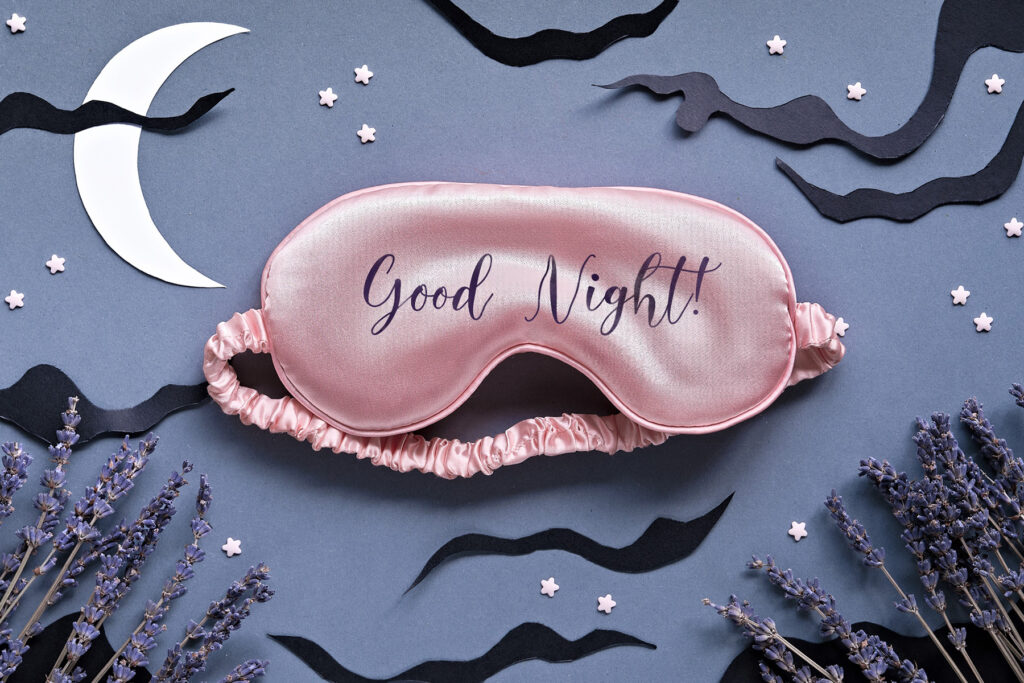
Depending on how sensitive you are to jet lag, prepare a few days in advance by adjusting to the new time zone before you arrive. To adjust your circadian rhythms, the general rule of thumb is: the number of days you will be jet lagged will equal the number of time zones you cross. If you really want to plan ahead, go to bed earlier or later (depending on the direction you’re going) at least 15-30 minutes until you reach the desired time change formula. In addition to change your bedtime and waketime, adjust your light exposure at these times too to decrease the length of time you are jet lagged on your trip.
If you’re traveling east, the jet lag tends to be more severe and the jet lag increases with the number of time zones crossed. Here are the formulas provided by Health Partners, whether travel east or west:
- If you are traveling east: Multiply the number of time zones you will be crossing by two. This is how many days ahead of your flight that you need to start adjusting your exposure to light and darkness. Then start going to bed 30 minutes earlier per day, and getting up 30 minutes earlier per day.
- If you are traveling west: Identify the number of time zones you will be crossing. This equals the number of days ahead of your flight that you need to start adjusting your exposure to light and darkness. Then start going to bed one hour later per day.
- Take in natural light. Regardless of the direction you’re heading, make sure you get 3-4 hours of bright light immediately after you wake up each morning.
- Try the Jet Leg Rooster calculator! Jet Lag Rooster creates an individual plan suggesting the best times for bright light exposure (e.g., sunlight) and melatonin. People who follow these suggestions report less jet lag (Lieberman, 2003). Shifting your body clock before departing can sometimes prevent jet lag completely (Burgess et al., 2003). Jet Lag Rooster is recommended by the Center for Disease Control (CDC Health Information for International Travel “Yellow Book”, 2016).
Tip 2: Try natural remedies to relax your mind and body before sleep.

- Trying a warm scented bath with vanilla and/or lavender baths salts, soak for at least 30 minutes to give you time for your muscles to relax.
- Spritz your pillow and bed covers with a delicate linen spray in lavender, geranium, chamomile, cedarwood, jasmine and sweet orange. Over 30 scientific studies found aromatherapy reduces stress, anxiety, and improves sleep in adults.
- Lavender can help with insomnia, anxiety and general restlessness.
- Geranium is known as a natural sedative, and bergamot can relieve anxiety.
- Put on an eye mask and block out the ambient light. Turns out that numerous studies show that a little fabric over the eyes can improve your quality of sleep and your brain power. Add ear plugs with soothing night sounds playing so you can become enveloped in your own little restful world.
- Watch what you eat and drink. Avoid alcohol, caffeinated beverages, spicy or carbohydrate-heavy meals, and sweets (including chocolate) at least a few hours before bed.
- Try herbs and supplements to help you sleep. Melatonin, Ashwagandha, Valerian Root, L-Theanine all are known to help relax you, induce drowsiness, and lengthen sleep times.
- L-Theanine is an amino acid in green tea, has been shown to affect brain functions by relieving stress disorders, improving mood, and maintaining normal sleep.
- Melatonin is a hormone produced naturally in your brain and is released in darkness to signal it’s time to sleep.
- Ashwagandha is an evergreen shrub that grows in Asia and Africa, and has been shown to calm the brain, reduce swelling, lower blood pressure, and alter the immune system.
- Expose yourself to as much natural light when you arrive. When you arrive, get outside as much as you can so your body’s clock begins to adjust, take a walk, go for a swim, and eat when you usually eat, as food sets your internal clock.
Tip 3: Help your children get a good night’s sleep so the rest of the family can sleep too!
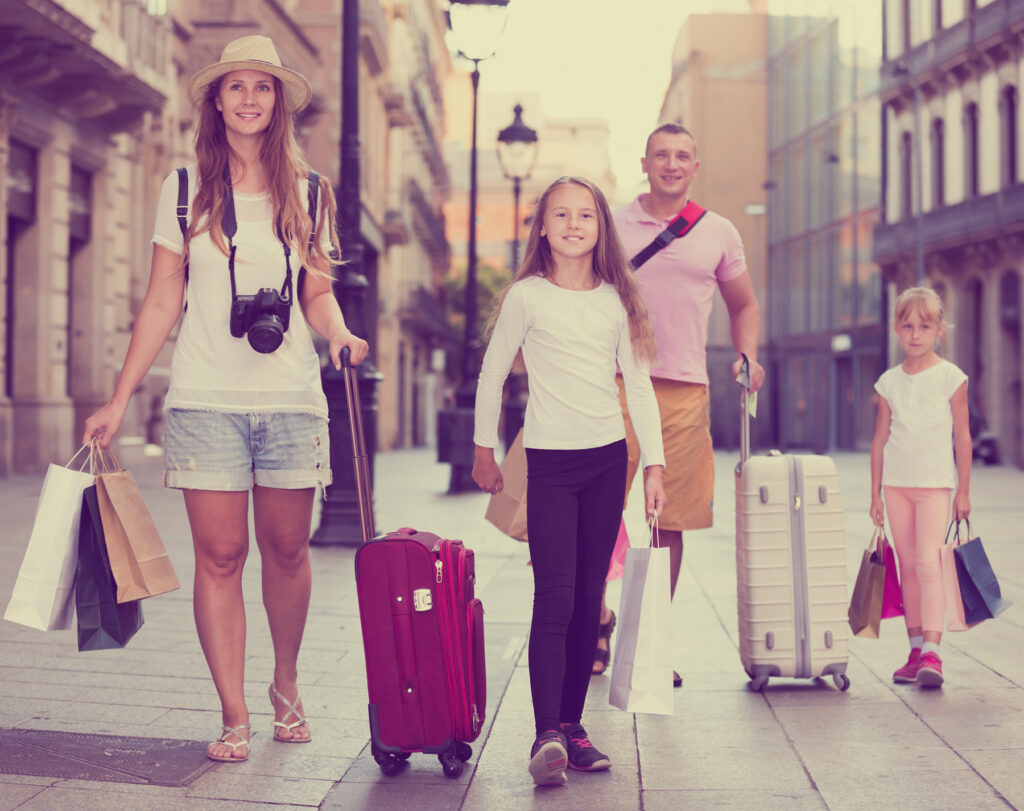
- Bring a piece of home on vacation. Pack their favorite blanket, soft toys and pajamas to soothe and comfort them when in unfamiliar settings. If their bedtime routine involves stories, cuddling, prayers and songs, maintain those habits while away.
- Keep their sleep and nap schedule as normal as possible. Respecting their sleep routine will benefit the whole family, even if it means scheduling activities around those times. And try to get the kids to bed as early as needed, as the travel and vacation activities may exhaust them more than usual.
- Make your vacation lodging conducive to sleeping. Like we already discussed, making the room as dark as possible, cool enough to sleep (it’s recommended between 65-68 degrees Fahrenheit), and arranging their portable crib, pack-and-play, or bed to allow for a quiet and restful sleep.
- Do your best to acclimatize them to the local time and vacation routine as much as possible. Avoid long naps during the day and wake them up at their usual times to avoid impairing their sleep on consecutive nights. If one child awakes early, instruct them not to wake the other children.
- Relax and don’t stress. As a parent, don’t stress too much, as children can feel and imitate the stress of their moms and dads, so do your best to stay calm have realistic expectations, especially on the first few nights. Remember too, that children tend to adapt quickly if they have lots of exercise, play and exposure to natural sunlight. Focus on the fun and keeping your children active during the day, walking on the beach, digging holes, admiring the wildlife, bike rides and enjoying family meals.
Traveling with a CPAP Device? – Have CPAP, Will Travel
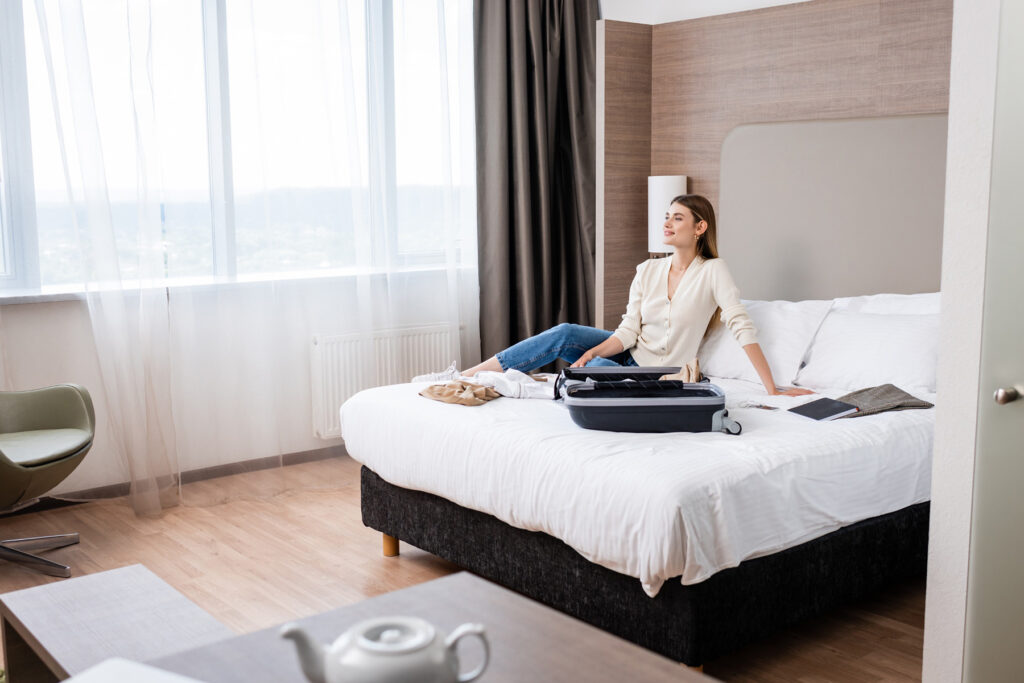
Considering a trip but you’re new to your CPAP Therapy? Does the idea of traveling with your device cause you stress and anxiety and possible confusion? If you are thinking it best to leave your CPAP equipment at home, think again. If you have OSA or other sleep issues, a vacation away from your CPAP therapy can impair your sleep, disrupt your circadian rhythm and cause your body undue stress. Don’t worry, you can easily travel with your CPAP therapy, so here are a few steps to get you and your CPAP equipment ready for travel.
Purchase a CPAP Travel Device before your Trip
Some benefits of a travel CPAP device include: it’s smaller is size, lighter in weight and easier to pack and setup. Travel CPAP devices are designed with additional features that facilitate easier travel with battery power. Travel devices are usually compatible with automobile auxiliary power outlet, DC cable converters, portable batteries, and even solar powered chargers. If you’re flying by plane, many CPAP devices are TSA-friendly and FAA-approved for in-flight use. Their compact size simplifies packing, and they are easy enough to disassemble for shorter flights. Some examples of recommended travel CPAP devices include:
- Transcend Micro Travel CPAP Machine
- ResMed AirMini Travel CPAP
- Somnetics Transcend 3 miniCPAP™ Auto
Purchase a Travel CPAP Batter before your Trip
Whether flying, driving, hiking, camping or RV’ing during your vacation, a CPAP battery can extend the life of your CPAP device, while in the air or on the road for up to 12-24 hours. Travel CPAP batteries are lighter and more powerful than ever and offer features that add convenience to your journey. Some recommended travel batteries (and a solar panel) include:
- Zopec Explore 8200 Travel CPAP Battery (288 Wh)
- Zopec Explore 5500 Travel CPAP Battery (160 Wh)
- Zopec Explore Oxygen Backup CPAP Battery (576 Wh)
- Zopec Explore 5700 Travel CPAP Battery
- Zopec Explore 4000 Travel CPAP Battery (130 Wh)
- Zopec Explore 40Lite Solar Charger Panel – 40Lite Solar Panel will recharge your Zopec CPAP battery anywhere and anytime the sun is shining.
Prepare your CPAP for Flying
First off, don’t stress because air travel with CPAP machines is allowed by the Transportation Security Administration (TSA), the agency that oversees the security for the U.S. travel industry. The TSA officers are very familiar with CPAP machines and see them numerous times daily. Just follow these simple steps to make the TSA’s job easier:
- Remove your CPAP from your luggage for security. Turn humidifier off, and turn on airplane mode (if applicable).
- Place your CPAP machine in a bin prior to being sent through the X-ray, but the facemask and tubing can remain in the case.
- Place your CPAP machine in a clear plastic bag before you put it in the bin, to keep it sterile.
- Add a Medical tag. Most TSA agents will recognize healthcare equipment, but a medical ID tag can make the process move along faster.
- Print out and keep an FAA Compliance letter with your CPAP machine, which can be found on your CPAP manufacturer’s website.
- Bring your prescription for your CPAP device or have access ready to your online medical records, in case a TSA agent wants additional verification of usage.
In conclusion
From the team at Everything Sleep Idaho, we wish you safe travels and lots of good night’s sleep this summer. If you suspect you or a family member is dealing with the symptoms of OSA, Sleep Apnea, RLS, Insomnia or any other sleep-related issue, don’t hesitate to call us for an appointment to discuss your concerns.








